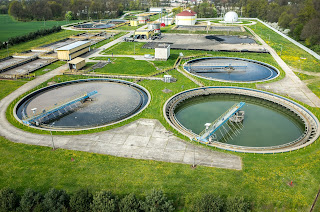The Three-Way Ball Sector Valve 4080 by Schubert & Salzer is a game-changer in industrial flow control. Its unique design, which includes a specialized ball sector and valve body, sets it apart from conventional three-way valves. This design allows the 4080 to achieve exceptionally high volumetric flow rates, surpassing its counterparts by approximately 20%. The result is nearly identical KVS values in all directions, enhancing performance across various uses.
The 4080 valve is a versatile solution for industrial processes, excelling at mixing or splitting flowing media. Its advanced features, including the ball sector's optimized contour, backlash-free bearing, and advanced actuators and positioners, ensure superior control accuracy. With a 90-degree positioning angle, it achieves a control rangeability of 300:1, adapting efficiently to varying operational demands.
The 4080 valve's design ensures that the forces from the flowing media are fully absorbed by the bearing shafts, requiring minimal actuation forces from either pneumatic or electric actuators. This leads to consistently low actuator torque across the entire actuation range, maintaining precise control regardless of differential pressure changes. The actuator can attach to the upper or lower shaft end, providing significant installation flexibility to accommodate diverse setups.
The 4080 valve pairs seamlessly with Schubert & Salzer's digital positioner type 8049 for enhanced performance. This combination maximizes control potential, offering additional features such as Ex and FM versions and IO-Link compatibility, which enables extensive status data for analysis and predictive maintenance.
The 4080 valve is a key component in critical temperature control and mixing processes within a variety of industries. It is particularly useful in the steel, chemical, food and beverage industries, as well as in power generation and the production of plastic and rubber products. Its robust construction from materials like stainless steel (1.4408/1.4404) and high-temperature plain bearings ensures durability and reliability under challenging conditions, handling fluid temperatures from -40°C to +220°C.
Moreover, Schubert & Salzer Control Systems GmbH ensures that the 4080 valve meets rigorous industry standards, featuring a nominal pressure rating of PN40 for DN50 and PN25 for DN65 to DN150, with a leakage class of VI according to EN 60534-4. This reliability extends to its wide range of actuator mounting options, designed according to DIN/ISO 5211 standards, and its suitability for liquids and gases.
As a leading provider of exact industrial control and stop valves, Schubert & Salzer continues to push the boundaries of valve technology. The Three-Way Ball Sector Valve 4080 exemplifies this commitment, offering unparalleled performance, efficiency, and adaptability to meet the diverse needs of modern industrial applications.
For more information about Shubert & Salzer products in NY, NJ, PA, DE, MD and OH contact Miller Energy, Inc. Call 800-631-5454 or visit https://millerenergy.com.




